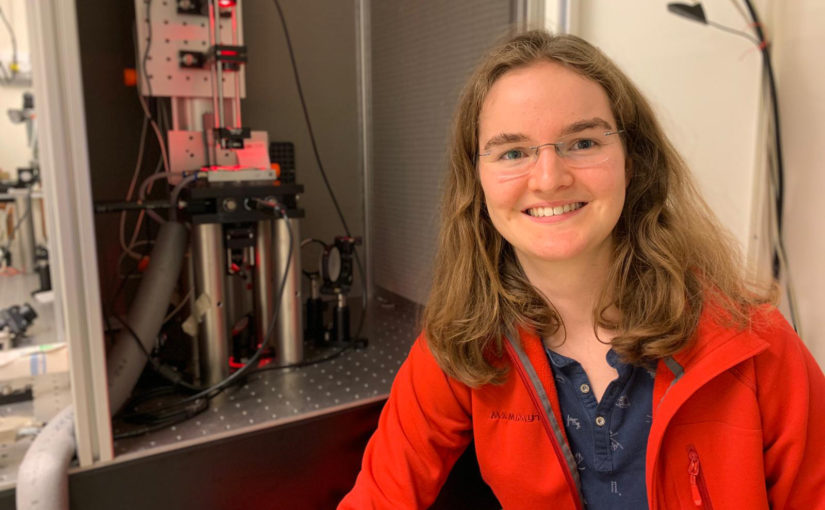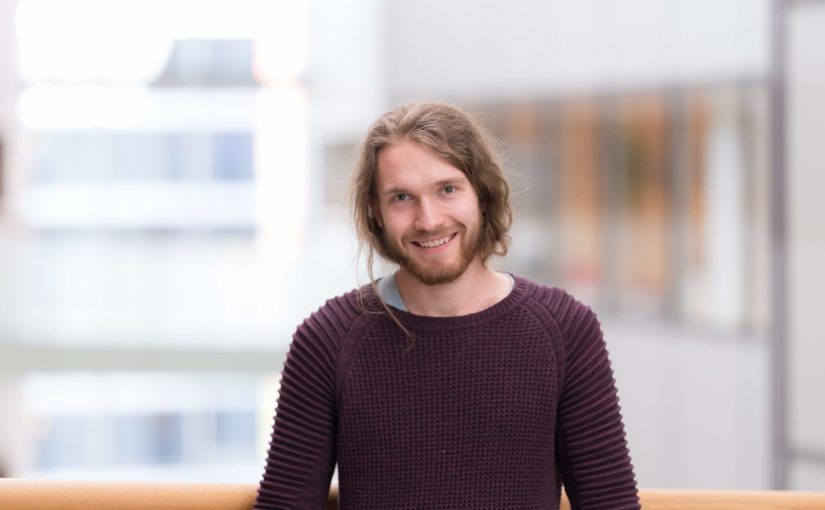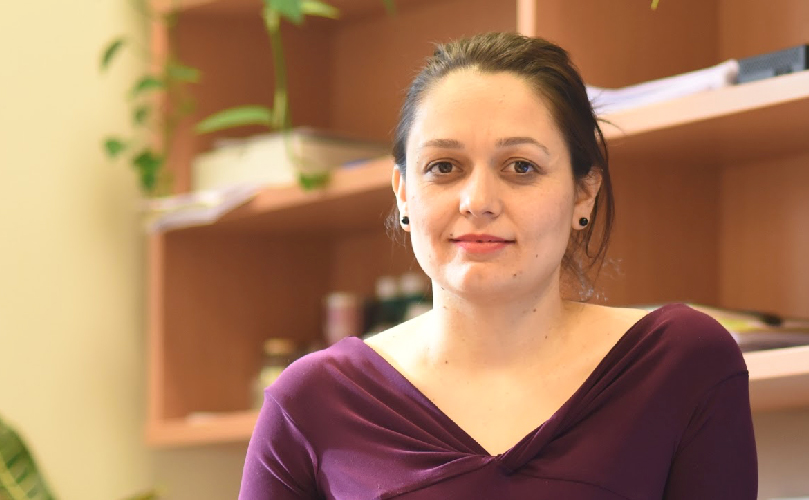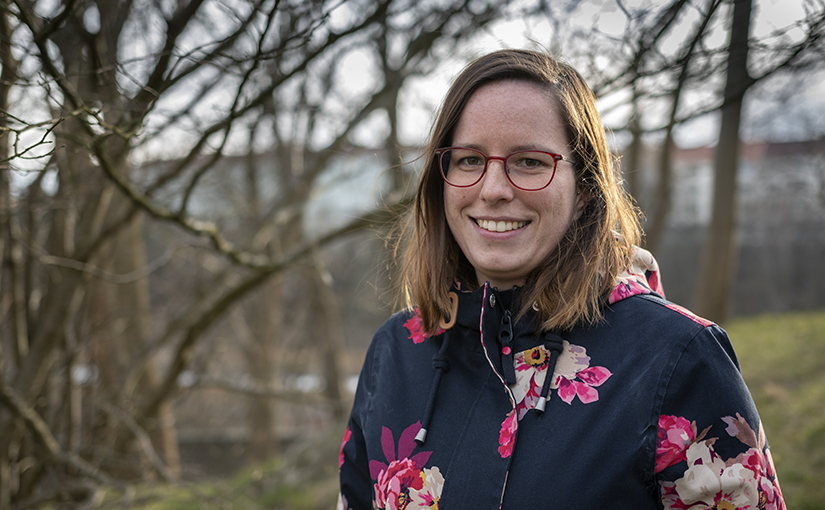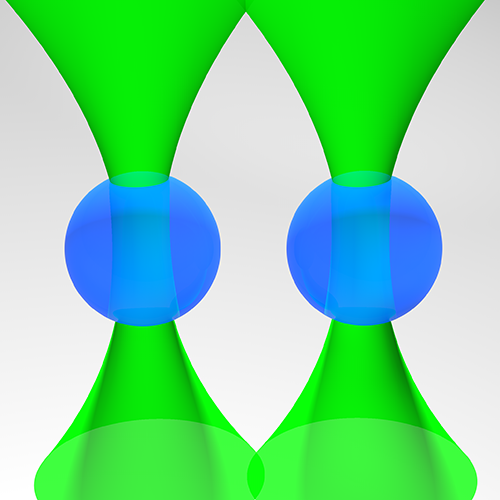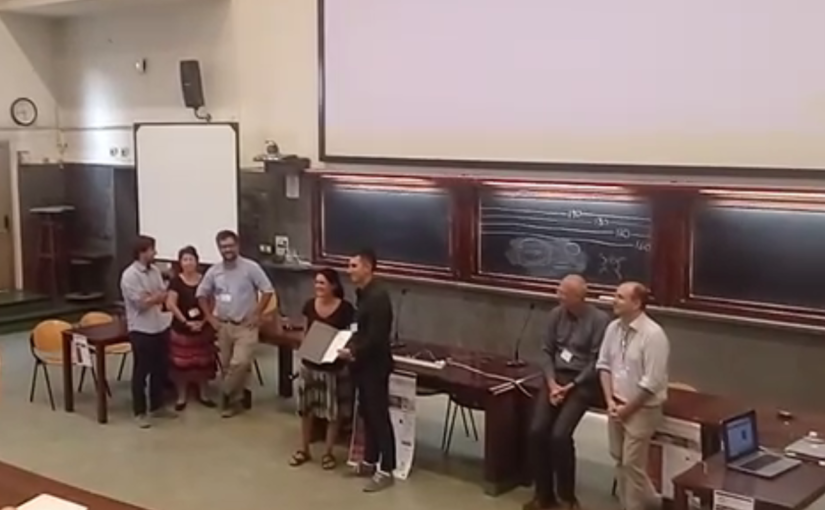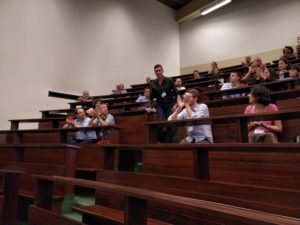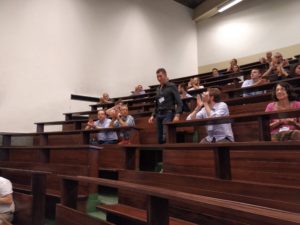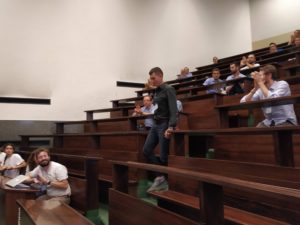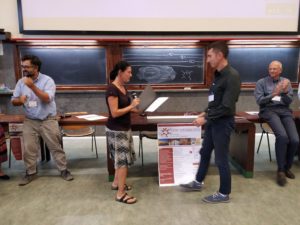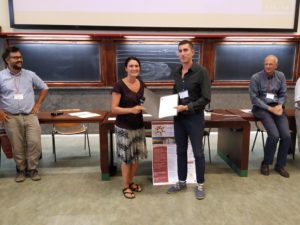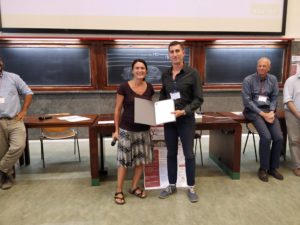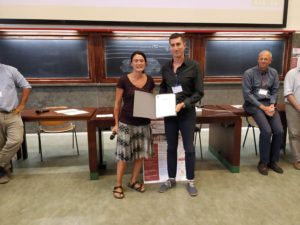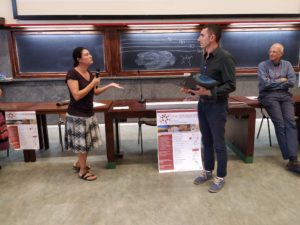Sophia Simon is a bachelor student at the Freie Universität of Berlin. She will do her summer internship at the Soft Matter Lab from July 21 to September 27, 2019, with a grant from DAAD (Deutscher Akademischer Austauschdienst). She will work on the tunability of critical Casimir forces in critical mixtures.
Author: Alessandro Magazzù
Fatemeh Kalantarifard defended her PhD Thesis on 10 June 2019. Congrats!
Fatemeh Kalantarifard defended her PhD Thesis on 10 June 2019 in the Department of Physics Seminar Room SA-240 – Bilkent University.
Her Ph.D. Thesis Defense was live streamed on 10 June 2019 at 15:30 CEST in the Raven & Fox room.
Assoc. Prof. Ömer Ilday (UNAM, Bilkent University), Assoc. Prof. Alpan Bek (Middle-East Technical University), Assist. Prof. Burcin Ünlü (Bogazici University), Dr. Seymour Jahangirov (UNAM), Prof. Oguz Gülseren (Bilkent University) and Assist. Prof. Giovanni Volpe (Bilkent University) will be the thesis committee members.
Thesis title: Intra-cavity optical trapping with fiber laser
Thesis abstract: Standard optical tweezers rely on optical forces arising when a focused laser beam interacts with a microscopic particle: scattering forces, pushing the particle along the beam direction, and gradient forces, attracting it towards the high-intensity focal spot. Importantly, the incoming laser beam is not affected by the particle position because the particle is outside the laser cavity. Here, we demonstrate that intra-cavity nonlinear feedback forces emerge when the particle is placed inside the optical cavity, resulting in orders-of-magnitude higher confinement along the three axes per unit laser intensity on the sample. This scheme allows trapping at very low numerical apertures and reduces the laser intensity to which the particle is exposed by two orders of magnitude compared to a standard 3D optical tweezers. These results are highly relevant for many applications requiring manipulation of samples that are subject to photodamage, such as in biophysics and nano-sciences.
Thesis Advisor Giovanni Volpe, Department of Physics, Bilkent University
Place: Physics Department seminar room (SA240), Bilkent University
Time: 10 June, 2019, 16:30 TRT (Turkey Time)
LIVE STREAMING:
Place: Meeting room Raven & Fox, Gothenburg University
Time: 10 June, 2019, 15:30 CEST
Quentin Pikeroen visits the Soft Matter Lab. Welcome!
Quentin Pikeroen is visiting from École Normale Supérieure (ENS) de Lyon from 13th May until 2nd August 2019.
Quentin Pikeroen has a Bachelor’s degree in general physics at the ENS de Lyon and he is enrolled in the first year of master degree in general physics at the ENS de Lyon.
Meltem Elitas from Sabanci University visits the Soft Matter Lab. Welcome!
Meltem Elitas is visiting from Sabanci University in Istanbul from 1st May until 28th June 2019.
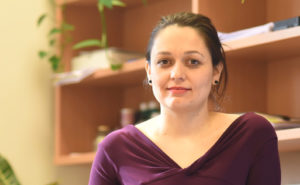 Meltem Elitas is a faculty member at the Mechatronics Program at Sabanci University in Istanbul, Turkey. Her background is Electrical and Mechatronics Engineering; she obtained her doctorate from Bioengineerieng and Biotechnology Department at École Polytechnique Fédérale de Lausanne. She performed her postdoctoral studies at Yale University Biomedical Engineering Department. She has published more than 25 papers and conference proceedings in reputed journals. Her research interests are biomechatronics, cellular heterogeneity, cellular interactions, tumor microenvironment, live cell imaging and development of microfabricated tools for quantitative biology. She is visiting the Soft Matter Lab as part of her ongoing Marie Skłodowska-Curie project.
Meltem Elitas is a faculty member at the Mechatronics Program at Sabanci University in Istanbul, Turkey. Her background is Electrical and Mechatronics Engineering; she obtained her doctorate from Bioengineerieng and Biotechnology Department at École Polytechnique Fédérale de Lausanne. She performed her postdoctoral studies at Yale University Biomedical Engineering Department. She has published more than 25 papers and conference proceedings in reputed journals. Her research interests are biomechatronics, cellular heterogeneity, cellular interactions, tumor microenvironment, live cell imaging and development of microfabricated tools for quantitative biology. She is visiting the Soft Matter Lab as part of her ongoing Marie Skłodowska-Curie project.
Presentation by Alessandro Magazzù at the OSA Biophotonics Congress, Tucson, 16 Apr 2019
Dynamics of optically trapped particles tuned by critical Casimir forces and torques
Alessandro Magazzù, Agnese Callegari, Juan Pablo Staforelli, Andrea Gambassi, Siegfried Dietrich & Giovanni Volpe.
OSA Biophotonics Congress, Tucson (AZ), USA 16 April 2019
Fluctuations have always played a crucial role in physics, especially when spatially confined by objects. Density fluctuations of the composition of a binary critical mixture emerge when its temperature is in proximity of the critical point. If these fluctuations are confined between two objects (e.g., two colloids, or a colloid and a planar surface), they give rise to Critical Casimir forces (CCFs). Although, these forces were predicted theoretically in 1978 in analogy to quantum-electrodynamical (QED) Casimir Forces they have never aroused a lot of attentions. They have always been considered mostly like a curiosity, until recently. Thanks to the development of nano-technology, CCFs seem to have establish their role in nano-science. They have been measured only recently, proving their relevance at nanoscale.
Session: Enhancing Techniques
14:00 –16:00, Tuesday, April 16, 2019
Chair: Frank Cichos; University Leipzig, Germany
Sandra Heckel visits the Soft Matter Lab. Welcome!
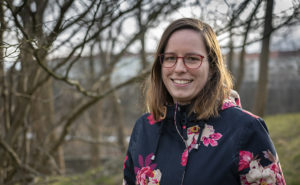 Sandra Heckel is visiting from the Technical University of Dresden from 26th March until 12th April 2019.
Sandra Heckel is visiting from the Technical University of Dresden from 26th March until 12th April 2019.
Sandra has a Bachelor degree in chemistry from TU Dresden and a Master degree in chemistry from TU Dresden and MIT, where she worked on a Master thesis about near-infrared bioimaging with semiconductor quantum dots.
In her PhD, she is working in the group of Juliane Simmchen on visible light-driven microswimmers and communication mechanisms among them.
If you would like to know more about Sandra Heckel and Juliane Simmchen’s research please visit their webpage.
Controlling Colloidal Dynamics by Critical Casimir Forces published in Soft Matter
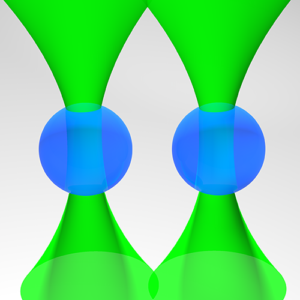
Controlling the dynamics of colloidal particles by critical Casimir forces
(Back cover article)
Alessandro Magazzù, Agnese Callegari, Juan Pablo Staforelli, Andrea Gambassi, Siegfried Dietrich & Giovanni Volpe
Soft Matter 15(10), 2152—2162 (2019)
doi: 10.1039/C8SM01376D
arXiv: 1806.11403
Critical Casimir forces can play an important role for applications in nano-science and nano-technology, owing to their piconewton strength, nanometric action range, fine tunability as a function of temperature, and exquisite dependence on the surface properties of the involved objects. Here, we investigate the effects of critical Casimir forces on the free dynamics of a pair of colloidal particles dispersed in the bulk of a near-critical binary liquid solvent, using blinking optical tweezers. In particular, we measure the time evolution of the distance between the two colloids to determine their relative diffusion and drift velocity. Furthermore, we show how critical Casimir forces change the dynamic properties of this two-colloid system by studying the temperature dependence of the distribution of the so-called first-passage time, i.e., of the time necessary for the particles to reach for the first time a certain separation, starting from an initially assigned one. These data are in good agreement with theoretical results obtained from Monte Carlo simulations and Langevin dynamics.
Funding:
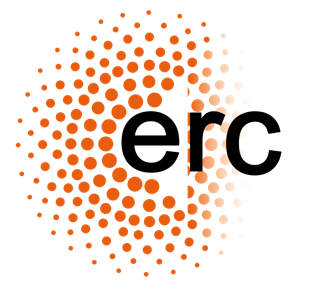
|
H2020 European Research Council (ERC) Starting Grant ComplexSwimmers (677511). |
Alessandro Magazzù awarded Best Presentation Prize at Soft Matter Days 2018
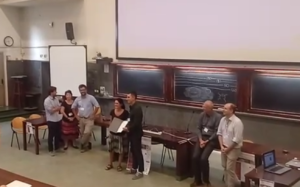 Alessandro Magazzù has been awarded a best oral contribution “Soft Matter poster price” during the conference Italian Soft Matter Days 2018, held in Padua, Italy on September 13-14, 2018. The prize has been given by Emanuela Zaccarelli, editorial board members of the Soft Matter journal. This prize mainly consists in an invitation to submit a manuscript without the pre-screening by the Editors. It also includes a “poster prize” and a personal yearly subscription to the journal.
Alessandro Magazzù has been awarded a best oral contribution “Soft Matter poster price” during the conference Italian Soft Matter Days 2018, held in Padua, Italy on September 13-14, 2018. The prize has been given by Emanuela Zaccarelli, editorial board members of the Soft Matter journal. This prize mainly consists in an invitation to submit a manuscript without the pre-screening by the Editors. It also includes a “poster prize” and a personal yearly subscription to the journal.
Talk by A. Magazzù at Italian Soft Days 2018, Padua, 13-14 Sept 2018
Microscopic engine powered by critical demixing
Alessandro Magazzù, Falko Schmidt, Agnese Callegari, Luca Biancofiore, Frank Cichos & Giovanni Volpe
Italian Soft Days 2018, Padua, Italy
13-14 September 2018
We propose a new type of engine powered by the local, reversible demixing of a critical binary liquid. In particular, we show that a light absorbing, optically trapped particle, performs revolutions around the trapping beam producing work.
This behavior results from an equilibrium between optical forces and diffusiophoresis induced by a local demixing of the critical mixture. This new kind of engine can be controlled by the optical power supplied, the temperature of the environment and the criticality of the system.
Reference: Schmidt et al. Microscopic Engine Powered by Critical Demixing, Phys. Rev. Lett. 120, 068004 (2018)
